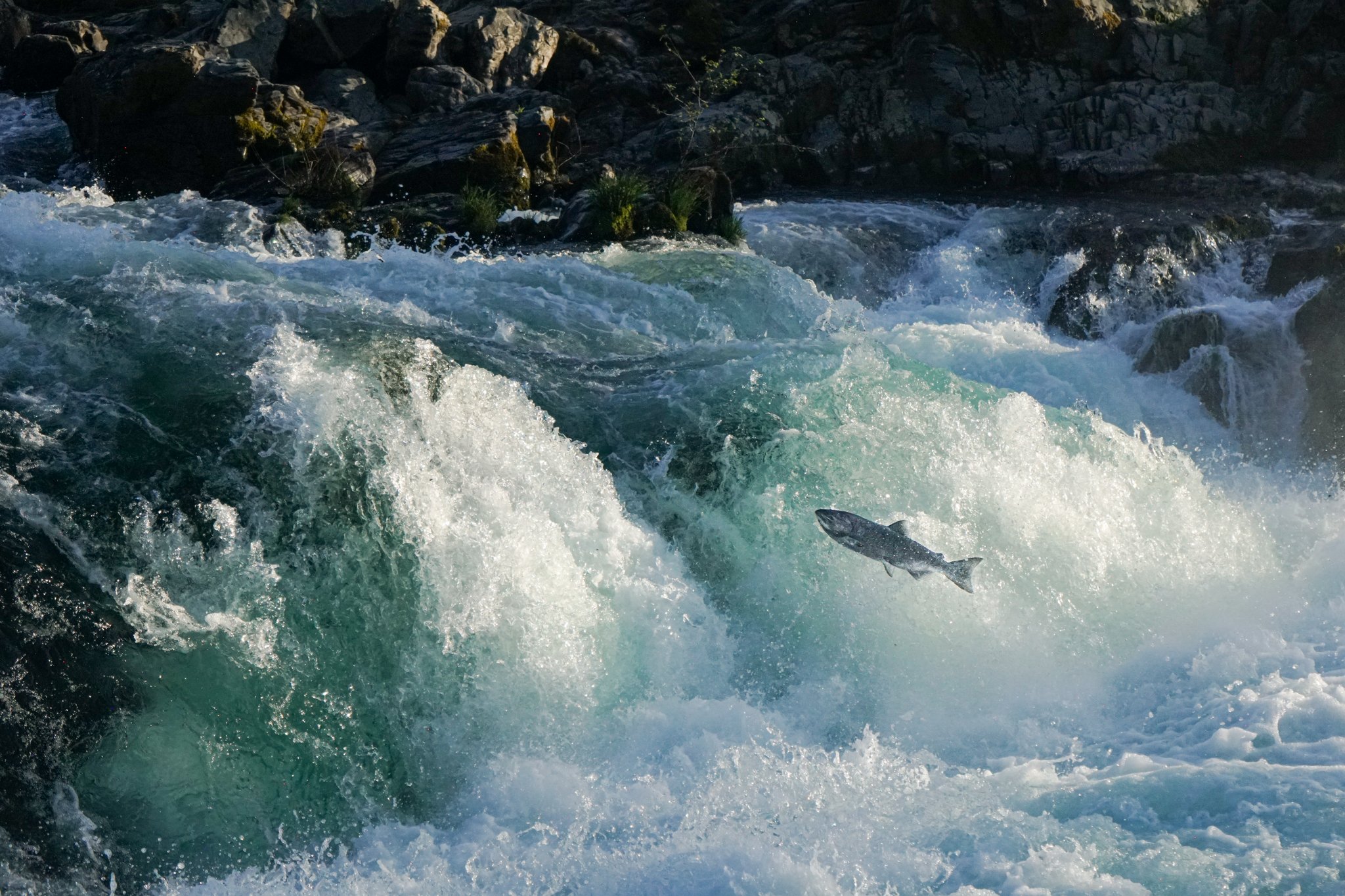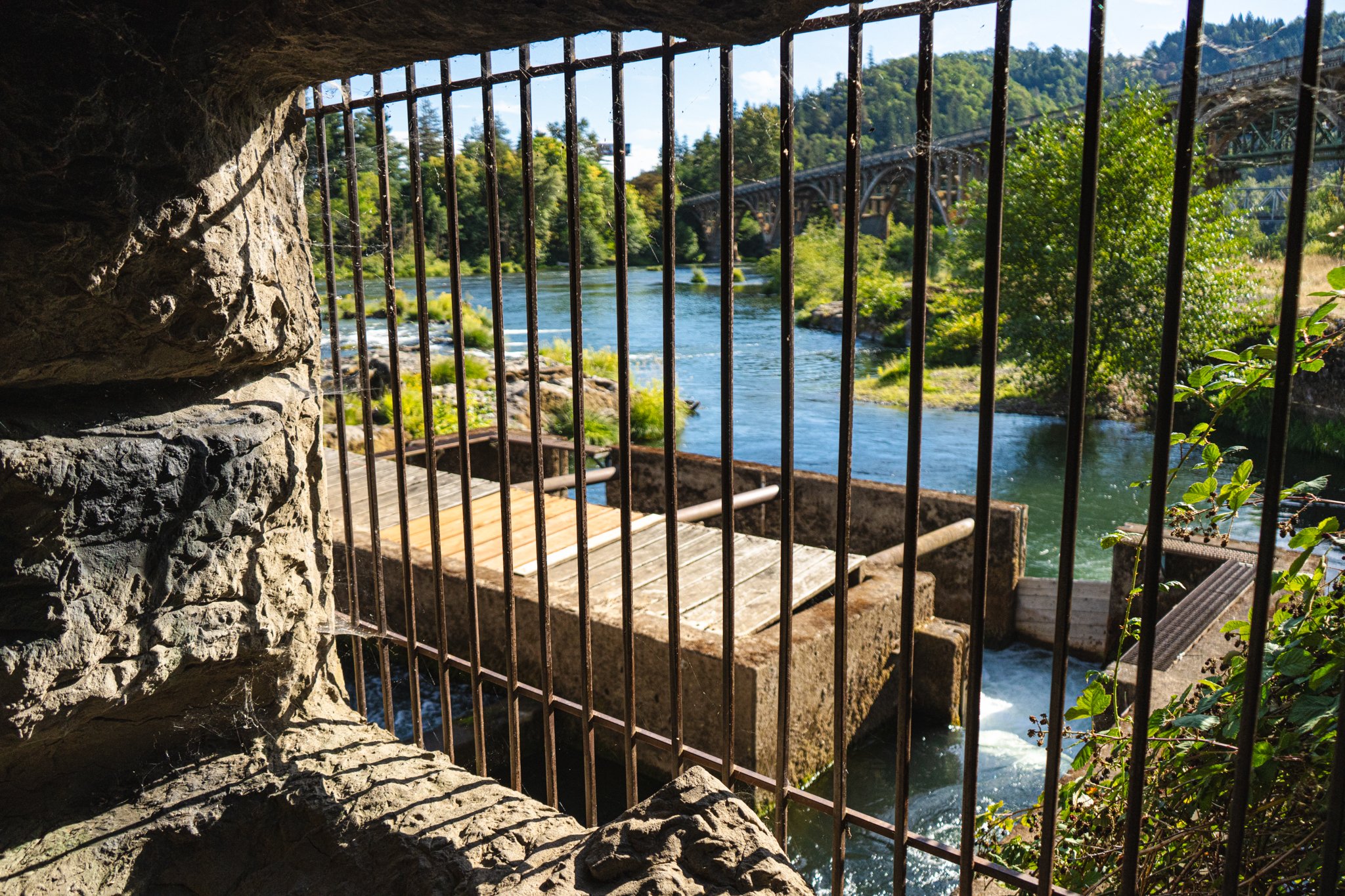The North Umpqua River and Winchester Dam
There was a pause in Kirk Blaine’s voice, and a light sigh came through my cell phone. “I moved here from Colorado and I remember driving down the North looking at the rolling rapids and thinking, ‘There’s steelhead in this river.’ I was stoked to be here. When I moved here, I didn’t have a job and started going fishing every single day. And it took me 30 days before I hooked my first steelhead. Ever since then I was fully bought in to this river.”
Blaine, the President of the Steamboaters – a non-profit organization that focuses solely on conservation measures on the North Umpqua River – was explaining why the North Umpqua River is so important to rafting, boating, and the wider outdoor community in Oregon. “It’s our crown jewel. It’s one of the most iconic rivers in the Pacific Northwest for our fish populations. And it truly means everything to these folks that love it.”
Speak with any person you see on the banks of the river holding a fishing rod and they will tell you a similar thing. Steve Abrams stood on the bank of the Boat Pool, a well-known run on the North Umpqua’s famous “Camp Water” in the fly fishing only section, on a rare, drizzly June morning. “I’ve been fishing this river since I was a boy. I’m getting close to 70 now.” Abrams lives in Springfield, Oregon, a three-hour drive away. “I used to be able to take a month or more and camp here and fish every day – I did that for years. Now I just come out for a few days at a time but I will be here every summer until the day I die,” Abrams said.
The North Umpqua is a river with a rich history, especially surrounding its famous summer steelhead run. Steelhead are rainbow trout that have evolved to swim downstream as juveniles and live in the Pacific Ocean for anywhere between one and four years. They enter the river as adults in spring and summer, where they spawn the next generation of steelhead. These are enigmatic fish iconic to the Pacific Northwest that have developed a passionate following of anglers up and down the West Coast, from California to Alaska. Ask any die-hard steelhead angler to name a few of the most famous steelhead rivers, and the North Umpqua would make that list nine times out of ten.
Steelhead numbers, along with their close cousins the five species of Pacific salmon, are experiencing a rapid decline across their historic range. Human impacts are the cause. The timber industry has logged extensively in areas where runoff from erosion or toxic pesticides run into headwaters or important tributaries, affecting the entire river. Hotter and drier summers reduce streamflow and increase water temperatures, sometimes to lethal highs. By far, the most impactful alteration to the landscape that humans have made is the construction of dams. These obstructions to fish passage were put in place to produce hydropower, serve as flood control for downstream communities, and sometimes to provide reservoirs for recreation.
Winchester Dam on the North Umpqua could very well be the most hated dam in Oregon. Built in 1890, without any fish passage, Winchester Dam was constructed so that early settlers in the area could divert water for agriculture. A fish ladder was eventually built to give salmon and steelhead a way of getting above and below the dam. It was later converted to produce hydropower by Pacific Corp., but it was quickly realized that the dam was in poor shape and would cost regional ratepayers millions of dollars to repair the dam face and turbines. To avoid wasting money, the power company gave the dam away for free to Winchester Water Control District, a group that acts as a homeowners association for the 150 homes that line the half-mile reservoir above the dam. “When the water rights were adjudicated in the 90s, it was allocated for recreational purposes.” Blaine said. “And that’s the point of the dam, for recreational purposes. There’s a special provision on the fish and wildlife commission and Oregon administrative rule that only the private owners can utilize the boat ramp there to run any motorized vessels.” This is one aspect that frustrates advocates of the North Umpqua River. “So it's kind of like this private little reservoir for them. They love their lakefront property behind their houses. The reality is, you remove that dam and restore a wild, flowing North Umpqua River, those properties might not appeal to those same homeowners but they would appeal to a lot of people, especially having the north Umpqua river in their backyard with the best steelhead run on the Oregon coast.”
I stood behind Tanner Irwin as he sent a long loop of fly line across one of the North Umpqua’s emerald green pools. The ancient river found its way to the ocean by carving through basalt and volcanic bedrock left over from ancient volcanic eruptions in the central Cascade Mountains. It stair steps through steep hillsides of blackened and burnt old-growth Douglas fir, leaping and tumbling in a raucous spray of whitewater before fanning out into the infinite pools that legendary fly fishing author Zane Gray said was “the best fly water in the world”. Without taking his eyes off the water before him, Irwin shouts over his shoulder at me so that I could hear over the roar of the river, “It’s been two days and I haven’t fallen in yet!” The North Umpqua is legendary for the difficult wading. Anglers hoping to stay upright in the river wear boots with aluminum spikes, studs, and cleats, which help feet get a purchase on the flat and slippery ledge rock. The first time I waded the North Umpqua back in 2020, I fell in four times in the first hour I fished the river.
Later, we leaned against his car with beers and watched the light fade in the surrounding burn scar left from the Archie Fire that blazed through the North Umpqua canyon in 2020. “I was here about week before the fire started. I used to drive up from Oakland [California] a few times a summer before I lived in Portland.” Irwin said he’s glad to live in Portland now, about 3 1/2 hours away. “I was devastated when I drove back through here the next time I came up after the fire. But it’s really cool to see the landscape start to come back.”
In the five years since the fire, it is impossible to ignore the total devastation the fire left behind. But where there were once dense timber hillsides, lush greenery, and vast swaths of multi-colored wildflowers flare up between burnt-out and hollow husks of three-hundred-foot fir and spruce trees. “I don’t think there were flowers like this before the fire,” Irwin said. “It was so dense all around that the sunlight never hit the ground.” Irwin had driven to the North Umpqua for a short visit to the river and to attend the annual summer barbecue put on by the Steamboaters. “I got involved because these guys just don’t stop fighting for this place, they’re the reason we can still come out here each year to chase these fish. If it wasn’t for the Steamboaters most of us would have never heard about the dam repair disasters the past couple of years which is why I support them. I know my money is going to a good cause and is fighting to keep this place alive for future generations.” Irwin took a sip from his can, “I’d like to show this place to my kid when she is born and grows up.” Irwin’s wife is about to give birth to their first child. He says he’s excited, but “It’s really going to cut in to my fishing time so I’m going to run down here fish as much as I can in the next month.”
Kirk Blaine apologizes for his “ramblings”, but to me, it just shows his level of dedication to the North Umpqua River and his unrelenting attempts to keep the Winchester Water Control District accountable for the harm the dam causes. “I took this job, and I remember ten years ago I was talking to my buddy Patrick and said, ‘We’re taking out Winchester, we’re going for it’. And that was ten years ago. But here we are today and it’s still there, causing problems.”
Just like Irwin, Blaine says that he wants to be able to bring his two young daughters here and show them the magic of the North Umpqua. “I make sure that I tell anyone who wants to write about this or tell this story that we have told the dam owners that we will take that thing out for free. It won’t cost them anything. We will do the fundraising, we will find the money to pay for it. We don’t care how much it costs. All dams have a lifespan.” Blaine’s professional life has taken him in a different direction, but he stays on as President of the Steamboaters. He and other leaders in the organization won’t quit until the North Umpqua River flows freely for the first time since the dam was built over 130 years. “It’s going to take everything we need to help conserve and protect it. It’s gone through so many changes over the last few years from fire, from impacts of climate change, the heat dome that hit us, and it continues to be affected by fire. But we really need to focus on the things we can control. And Winchester Dam is one of the things we can control by removing it and creating unimpeded fish passage up and downstream for these fish.”










